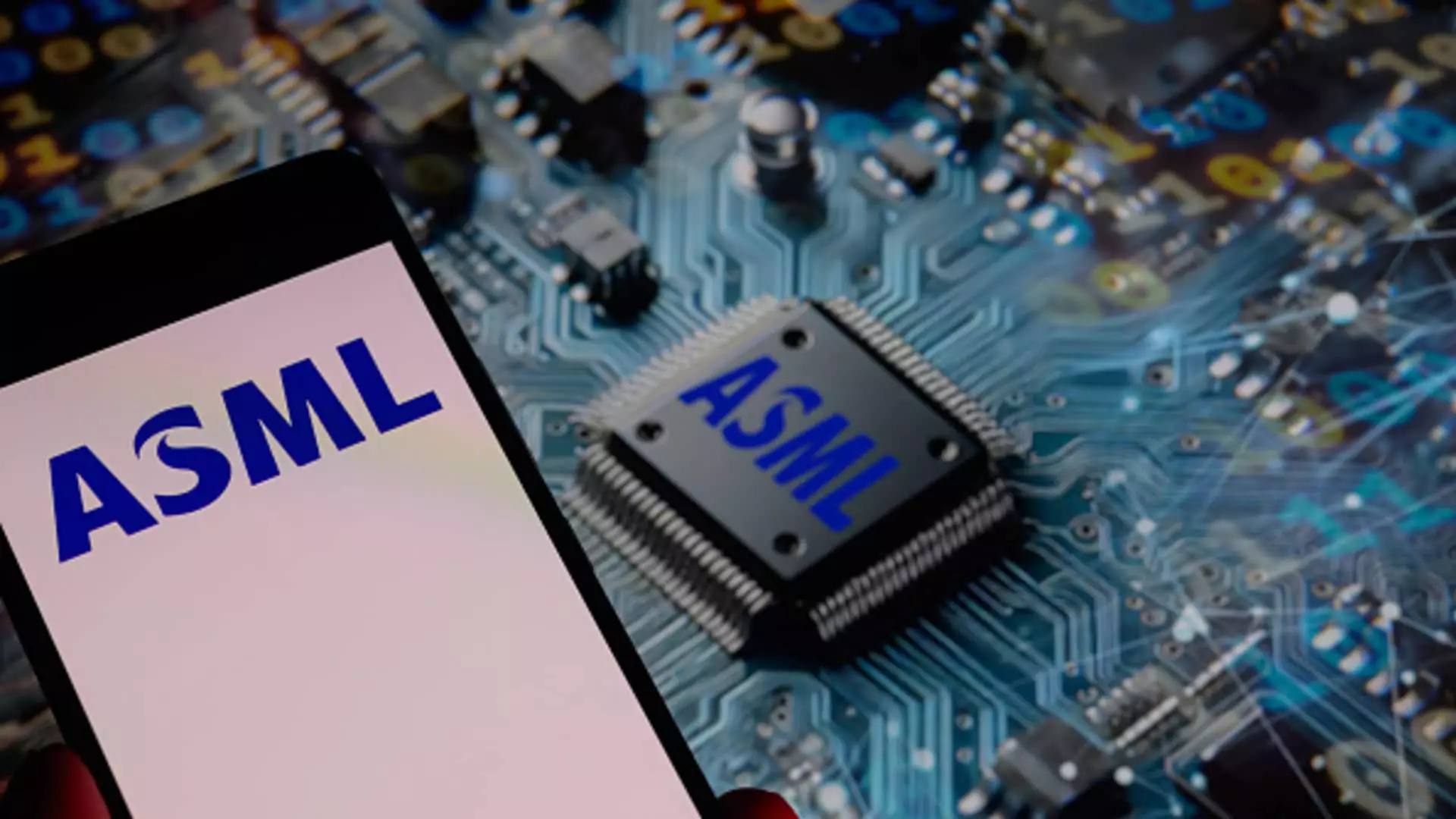In a turbulent market environment dominated by geopolitical strife, ASML, a titan of semiconductor technology, has witnessed a staggering decline of over $130 billion in its market capitalization over the past year. Once reveling in glory with stock prices soaring above 1,000 euros per share just last July, ASML’s valuation has plummeted to around 297 billion euros at recent trading sessions. As a crucial player in the semiconductor supply chain—producing extreme ultraviolet lithography (EUV) machines essential for crafting the most advanced microchips—this fall is particularly disconcerting for both investors and industry analysts alike.
The Crucial Role of Geopolitics
At the heart of this catastrophic descent lies the tightening of U.S. export restrictions to China, coupled with the overarching threat of tariffs introduced during the Trump administration. While it’s easy to pinpoint geographical boundaries in such discussions, the reality is that the semiconductor industry knows no borders. The restrictions crippled ASML’s ability to cater to one of its most promising markets—China—which raises serious questions about the company’s future growth prospects and its position within an increasingly isolationist global trade framework. The current tug-of-war between nations over technology exports has created a chilling effect across the industry, adding layers of uncertainty that even the most bullish analysts struggle to navigate.
The AI Investment Conundrum
Adding to the concern is a nuanced debate regarding the sustainability of investments in artificial intelligence—a sector closely linked to semiconductor advancements. Analysts like Stéphane Houri point out potential oversaturation in AI investments as a contributing factor to the overall uncertainty surrounding demand levels. If companies have indeed overcommitted resources in hopes of reaping the benefits of AI, the realization may lead to a reconsideration of where these funds ought to be allocated. The ramifications for semiconductor firms like ASML could be dire, leading to dampened demand for the very technologies that are supposed to propel us into an AI-driven future.
The Inherent Risks and Opportunities
Despite the external pressures, ASML still holds a unique market position, particularly due to its stronghold on producing the world’s only EUV machines. The company serves powerhouses in chip production like TSMC, offering a model of resilience in the face of adversity. Recently, ASML has even ventured to ship the next generation of its machines, known as high numerical aperture (High NA), which signals a commitment to innovation that is often scarce in troubled times. However, this progress is double-edged; while advancing technology could bolster future revenues, the company is still shackled by its inability to engage with the tantalizing Chinese market.
ASML’s CEO Christophe Fouquet articulates a rather sombre outlook, suggesting that by 2025, the company’s footprint in China will likely diminish further. This is not merely a reflection of market sentiment but rather an indication of deep-rooted structural changes taking place on the global stage. It beckons the question—should ASML pivot its strategy to mitigate impacts from these geopolitical tensions, or remain steadfast in its current trajectory, trusting in the eventual market stabilization?
The Analyst Optimism
Interestingly, there remains a glimmer of optimism amidst the storm, with several analysts maintaining a bullish stance on ASML’s long-term potential. With projected target prices hovering around 779 euros, implying a 17% upside from recent market performances, it’s clear that some experts see a pathway for recovery. They point toward major companies like Samsung and Intel investing significantly in next-generation chipmaking technologies as proof that the sector still craves progress, regardless of the hurdles currently faced.
However, this optimism may also be naive. It assumes a level of stability in international policies and economic strategies that is, in today’s climate, highly questionable. The broader implications of an escalating trade war might outweigh any individual recovery indicators for ASML, sowing doubt over whether the predicted recovery will be more than just a fleeting moment of hope. In an environment where political tensions shape market attitudes, the future of ASML—and indeed the entire semiconductor industry—remains ominously uncertain.

